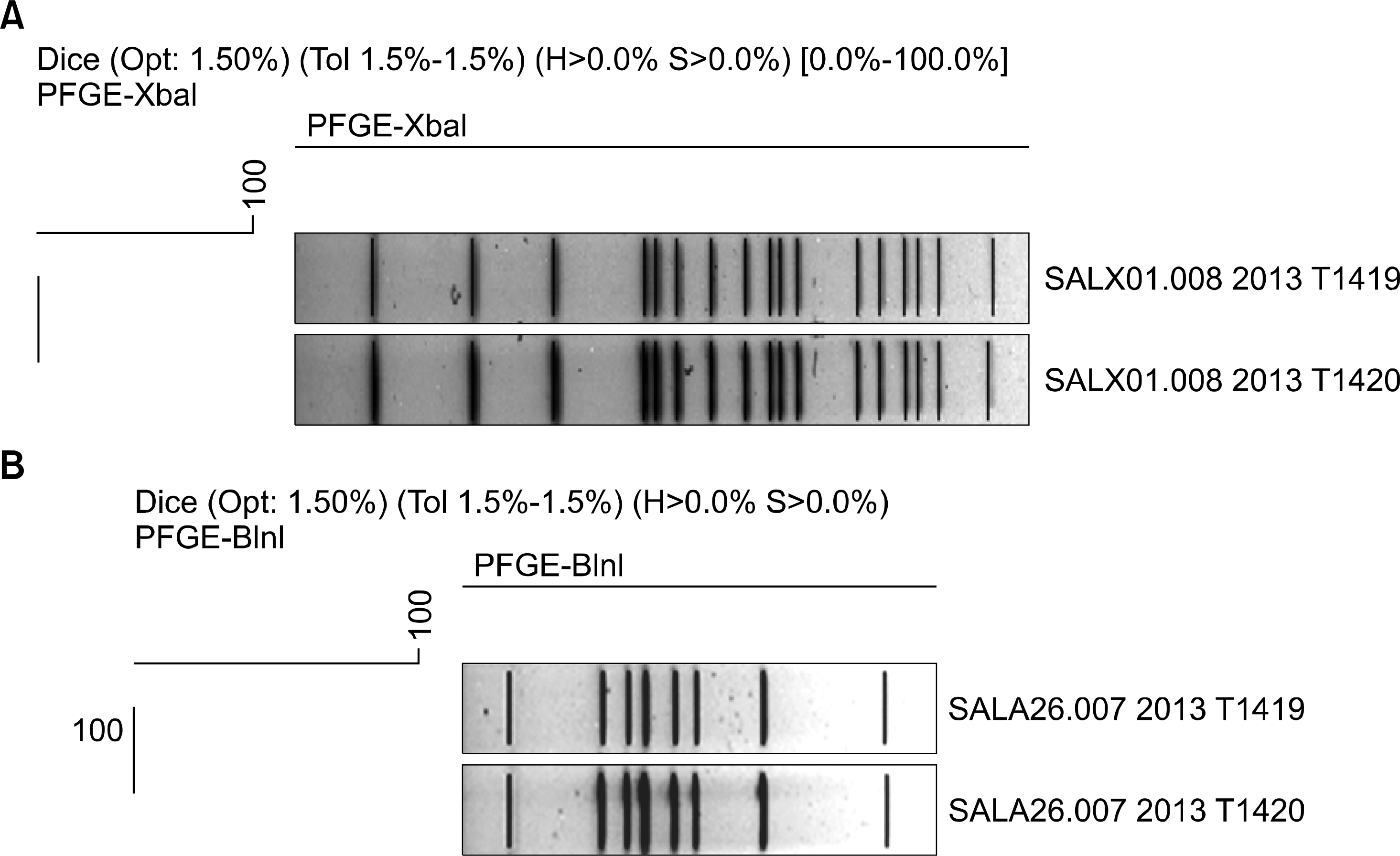Abstract
Salmonellosis is a common food- and water-borne disease and is also a major zoonosis. Currently, the isolation of rare Salmonella serotypes is increasing every year in Korea. Among them, the Salmonella serotype Tilene was first isolated from two people who visited a hospital located in Andong-si in 2013. Clinical symptoms were weak or non-existent. There was no clear epidemiological connection between the two cases. However, it was assumed that both were independently exposed to a single infectious agent. Perhaps due to their geographical proximity, molecular epidemiological analysis showed the same result between the isolated strains. This serotype has increasingly reported an association with hedgehogs. Recently, the importation of exotic animals, including hedgehogs, as pets has been gradually increasing. Thus, it is recommended that high-risk groups avoid contact with exotic pets.
References
1. Hoelzer K, Moreno Switt AI, Wiedmann M. Animal contact as a source of human non-typhoidal salmonellosis. Vet Res. 2011; 42:34.

2. Woodward DL, Khakhria R, Johnson WM. Human salmonellosis associated with exotic pets. J Clin Microbiol. 1997; 35:2786–90.

3. Centers for Disease Control and Prevention (CDC). African pygmy hedgehog-associated salmonellosis–Washington, 1994. MMWR Morb Mortal Wkly Rep. 1995; 44:462–3.
4. Le Minor L, Pinhede N, Kerrest J, Armengaud M, Baylet R, Drean D. A new serotype of Salmonella, S. Tilene (1,40: e, h: 1, 2). Bull Soc Path Exot. 1960; 53:777–8.
5. Lee DY, Lee E, Min JE, Kim SH, Oh HB, Park MS. Epidemic by Salmonella I 4,[5],12: i: – and characteristics of isolates in Korea. Infect Chemother. 2011; 43:186–90.
6. Grimont PAD and Weill FX. Antigenic formulae of the Salmonella serovars. 9th ed. Paris, France. Institut Pasteur, WHO Collaborating Centre for Reference and Research on Salmonella;. 2007. 17–154.
7. Issenhuth-Jeanjean S, Roggentin P, Mikoleit M, Guibourdenche M, de Pinna E, Nair S, et al. Supplement 2008–2010 (no. 48) to the White-Kauffmann-Le Minor scheme. Res Microbiol. 2014; 165:526–30.

8. CLSI. Performance standards for antimicrobial susceptibility testing; twenty-third informational supplement. CLSI document M100-S23. Wayne, PA: Clinical and Laboratory Standards Institute;2013.
9. Uzzau S, Brown DJ, Wallis T, Rubino S, Leori G, Bernard S, et al. Host adapted serotypes of Salmonella enterica. Epidemiol Infect. 2000; 125:229–55.

10. Gyles CL, Prescott JF, Songer JG, Thoen CO. Themes in bacterial pathogenic mechanisms. Gyles CL and Prescott JF, editor. Pathogenesis of bacterial infections in animals. 3rd ed.Ames, Iowa: Wiley-Blackwell;2004. p. 3–14.

11. Craig C, Styliadis S, Woodward D, Werker D. African pygmy hedgehog–associated Salmonella Tilene in Canada. Can Commun Dis Rep. 1997; 23:129–31.
12. Lee DY and Kang Y. Human infection of Salmonella Matadi in Korea. Yonsei Med J. 2013; 54:1297–8.
13. Lee DY and Choi ES. Case report about first isolation of imported Salmonella Wandsworth in Korea. PHWR. 2011; 4:790–2.
14. Kagambèga A, Haukka K, Siitonen A, Traoré AS, Barro N. Prevalence of Salmonella enterica and the hygienic indicator Escherichia coli in raw meat at markets in Ouagadougou, Burkina Faso. J Food Prot. 2011; 74:1547–51.
15. Korea Customs Service. Trade statistics system. http://www.customs.go.kr/kcshome/index.jsp/. [Online] (last visited on 12 June 2015).




 PDF
PDF ePub
ePub Citation
Citation Print
Print



 XML Download
XML Download